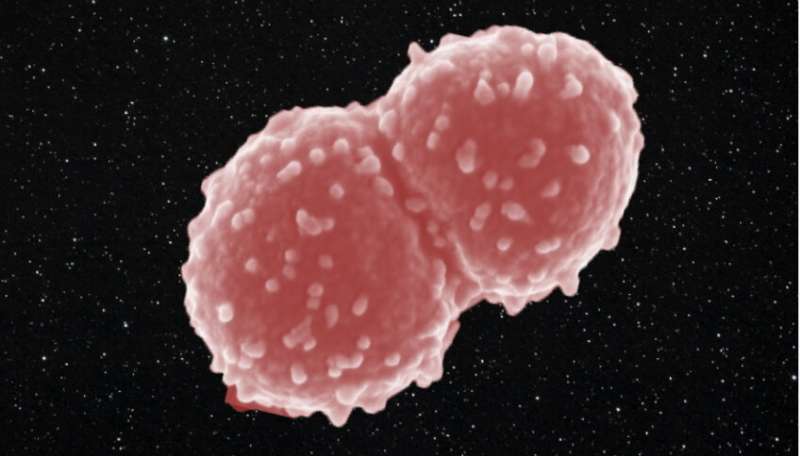Microbial space travel on a molecular scale

Since the dawn of space exploration, humankind has been fascinated by survival of terrestrial life in outer space. Outer space is a hostile environment for any form of life, but some extraordinarily resistant microorganisms can survive. Such extremophiles may migrate between planets and distribute life across the Universe, underlying the panspermia hypothesis or interplanetary transfer of life.
The extremophilic bacterium Deinococcus radiodurans withstands the drastic influence of outer space: galactic cosmic and solar UV radiation, extreme vacuum, temperature fluctuations, desiccation, freezing, and microgravity. A recent study examined the influence of outer space on this unique microbe on a molecular level. After 1 year of exposure to low Earth orbit (LEO) outside the International Space Station during the Tanpopo space Mission, researchers found that D. radiodurans escaped morphological damage and produced numerous outer membrane vesicles. A multifaceted protein and genomic responses were initiated to alleviate cell stress, helping the bacteria to repair DNA damage and defend against reactive oxygen species. Processes underlying transport and energy status were altered in response to space exposure. D. radiodurans used a primordial stress molecule polyamine putrescine as a reactive oxygen species scavenger during regeneration from space exposure.
"These investigations help us to understand the mechanisms and processes through which life can exist beyond Earth, expanding our knowledge how to survive and adapt in the hostile environment of outer space. The results suggest that survival of D. radiodurans in LEO for a longer period is possible due to its efficient molecular response system and indicate that even longer, farther journeys are achievable for organisms with such capabilities," says Tetyana Milojevic, a head of Space Biochemistry group at the University of Vienna and a corresponding author of the study.
Together with the colleagues from Tokyo University of Pharmacy and Life Science (Japan), Research Group Astrobiology at German Aerospace Center (DLR, Cologne), Vienna Metabolomics Centre (ViMe) at the University of Vienna and Center for Microbiome Research at Medical University Graz, researchers answered the question not only to what extent but also how extremophilic microbes can tolerate drastic space conditions.
More information: Emanuel Ott et al, Molecular repertoire of Deinococcus radiodurans after 1 year of exposure outside the International Space Station within the Tanpopo mission, Microbiome (2020). DOI: 10.1186/s40168-020-00927-5
Provided by University of Vienna





















